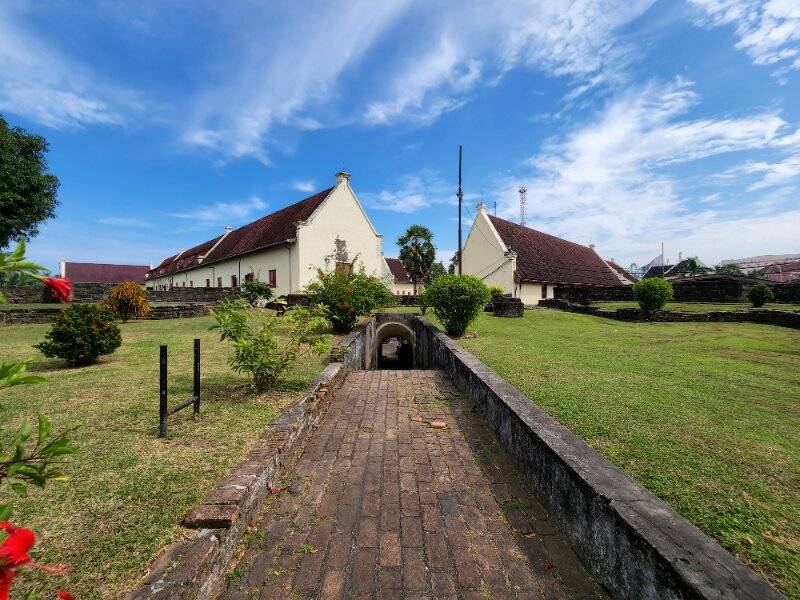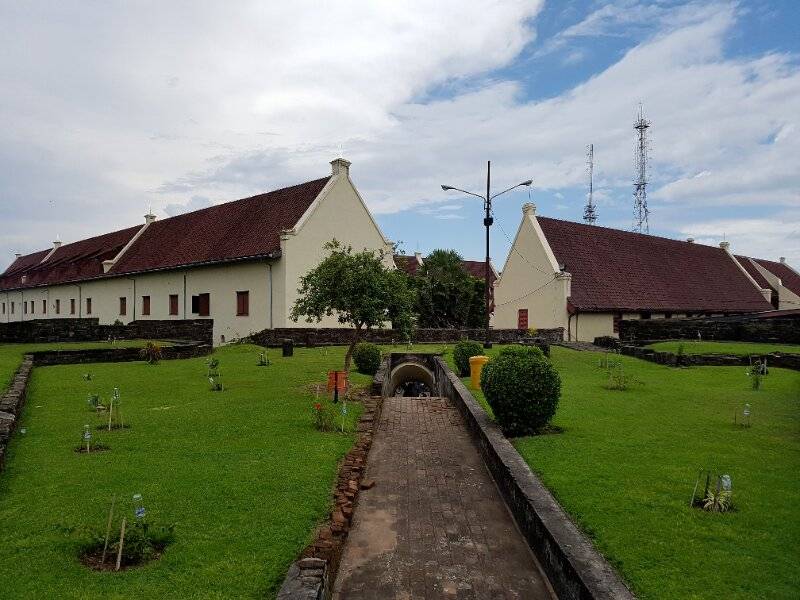Tourist destinations that must be visited are not only natural attractions or playgrounds, it would be very good if you also invite your children and loved ones to visit historical sights so they can get to know more about the history of the lives of their ancestors. Indonesia, not only a storehouse of natural tourist destinations.
Indonesia is a country rich in culture and history that is so amazing. There are various kinds of ancient relics that you can make as historical tourist destinations with your family, one of which is Fort Rotterdam in Makassar.
Historical Tourist Attractions Fort Rotterdam is a silent witness to past history, when the Dutch were still loyal colonizers of the Indonesian nation. Historical Tourist Attractions Fort Rotterdam has another name, namely Fort Payyua, this name comes from the shape of Fort Rotterdam which resembles a turtle, the construction of Fort Rotterdam resembles a turtle is not without reason, because there is a deep philosophical meaning to the construction of this fort, namely the ability of turtles to live both on land and at sea.
Visiting Fort Rotterdam will not be complete if you do not know the history behind the fort’s establishment. Located in the South Sulawesi region. Fort Rotterdam looks so majestic and charming that a New York Times journalist, Barbara Crossette, called this fort “the Best Preserved Dutch Fort in Asia”. Before being named Fort Rotterdam, this building was formerly called Fort Jungpandang which comes from the name Makassar Ujung Pandang.
History of Fort Rotterdam

Let’s go back for a moment to the 17th century, the century when the Sultanate of Gowa was still victorious in this Bugis Land. The Sultanate of Gowa had 17 forts in all corners of the capital, but among all the forts Fort Rotterdam was the most magnificent fort and the good news is that some parts of Fort Rotterdam are still preserved today.
Fort Rotterdam was built in 1545 by the 10th King of Gowa named Imanrigau Daeng Bonto. Initially, the fort was only rectangular in shape because it followed the Portuguese-style fort architecture with the basic ingredients being a mixture of stone and clay which was fired to dry.
However, on August 9, 1634, the XIV Sultan of Gowa, namely Mangerangi Daeng Manrabbia who had the title Sultan Alauddin, surrounded Fort Rotterdam with walls made of black stone, and in 1635 a second wall was built near gate.
However, it is very unfortunate that during the leadership of Sultan Hasanuddin, namely from 1655 to 1669, this fort was destroyed due to the invasion of Dutch troops who wanted to control the spice trade route, and to make it easier for them to open routes to the Banda and Maluku areas. During one year the attack resulted in Fort Rotterdam being destroyed and impacted on the signing of the Bongaya agreement on 18 November 1667 by the Sultan of Gowa.
After the signing of the agreement, the governor general Spellman and all his men returned to building Fort Rotterdam in the Dutch architectural style. Fort Rotterdam which was originally rectangular in shape, added one more building on the west side. The name Rotterdam itself is taken from the name of the birthplace of General Spellman. Since then, Fort Rotterdam has been used as a trading center, and to accumulate agricultural products in the form of spices, and was opened as the center of Dutch administration for eastern Indonesia.
Also read: Tanjung Bira Beach Makassar Entrance ticket prices for 2023, Location of Tourist Locations, White Sands
The splendor of the Fortress

The splendor of Fort Rotterdam’s historical tourism can be seen from the towering walls of the fort which reach almost 5 meters in height with a thickness of about 2 meters, but has a small entrance, besides that, Fort Rotterdam has 5 bastions which are used as cannons. Bastion is a building that is stronger and has a higher position in every corner of the fort than other fort buildings. That’s why you can say Bastion is the key to destroying opponents who attack the fort.
There is one more history that you should know about this Historical Tourist Attraction of Fort Rotterdam, namely that Fort Rotterdam was once used as a prison for Prince Diponegoro who fought against the Dutch between 1825-1830.
Not only that, Fort Rotterdam is currently also equipped with the La Galigo Museum which has a collection of no less than 4,999 collections in the form of historical relics, numismatics, foreign ceramics, ancient manuscripts, and ethnography such as various types of technological products, living equipment used at that time, art, as well as various other objects that had been created by the Bugis, Makassar, Mandar, and Toraja peoples.
The historical wealth stored by Fort Rotterdam has made the government designate Fort Rotterdam as a historical tourist attraction that must be visited by all levels of society, and Fort Rotterdam has been designated as the cultural center of South Sulawesi. So, when you are in Makassar City, take your time to get to know the history of our nation’s past by looking at the various kinds of relics that exist at the Historical Tourist Attractions of Fort Rotterdam.
0 Post a Comment
Post a Comment